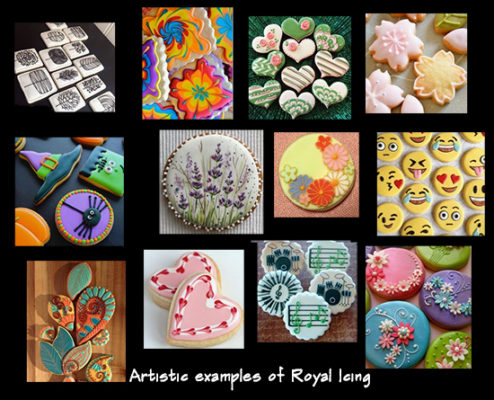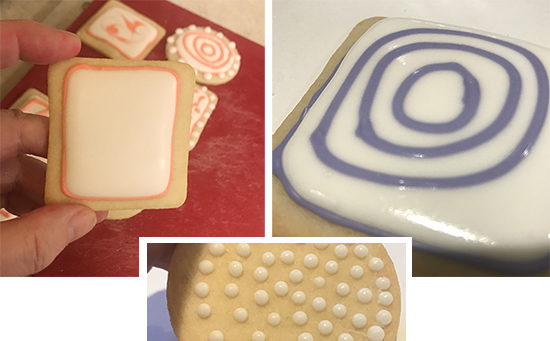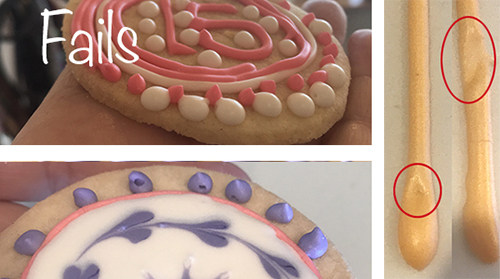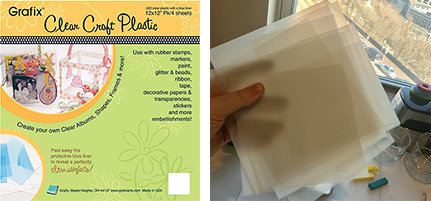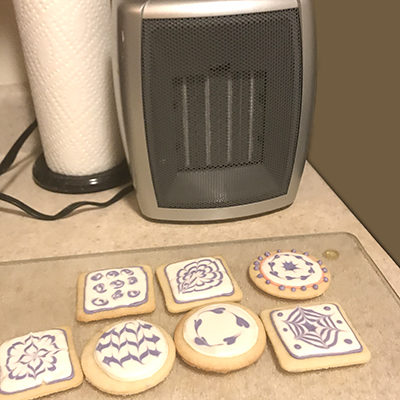How to Test Royal Icing for Consistency (updated July 15, 2019)
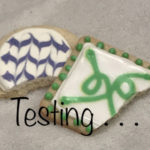
Consistency describes the behavior of Royal Icing required to achieve your objectives. The right consistency is based upon:
<+> Recipe: The behavior and outcome of recipes differs with ingredients and humidity. I personally recommend recipes that contain real egg whites, preferring pasteurized egg whites. (See “Royal Icing Recipes“)
<+> Flatness: Refers to the time it takes for the surface of Royal Icing to flatten, usually indicating how much moisture (water) was added to the mixture. If too much time elapses during the settling process, the surface of the icing begins to harden, interfering with smoothness.
<+> Piping Tips: The ease of extrusion from a very small tip and a large one is different. Icing consistency is often different for different sized tips, with a looser consistency possibly needed for very small tips than for larger sizes.
<+> Humidity: The higher the humidity, the looser the mixture as the icing absorbs atmospheric water.
Examples of Royal Icing Art
When you plan your icing project, be aware that every distinct section of a Royal Icing decorated cookie requires a unique batch of Royal Icing. Each unique batch is defined by consistency (use), its color and possibly the tip sized used to pipe it, with all batches being subsets of the initial batch. A single cookie design, like the green hearts below, might require multiple batches.
Note: Examples from Pinterest
The three examples below demonstrate three different Royal Icing consistencies:
- A flood consistency was used on the white and pink cookie, which dried to a firm, smooth surface.
- A “wet on wet” consistency was used on the white and purple cookie, with the purple sinking into the white icing which resulted in a smooth surface.
- A “dot” consistency was used on the last cookie. This consistency results in dome-topped dots. If peaks appear, the consistency is not correct. Add a tiny amount of water to your mix.
If you do not test all of your design’s batches for consistency prior to using them, sections of your design might fail, rendering overall disappointing results.
Consistency Testing Benchmarks
It would be nice to think that “one consistency size fits all,” but it doesn’t. Even seasoned experts test for the presence of the proper consistencies before beginning their design process. Here is what to look for:
- Flood: This is used to fill large areas. Rather than paying attention to the time it takes to reach flatness, I recommend you test it on a copy of your cookie area or design. If it works as planned, you nailed it. If not, adjust until it does.
- Slightly stiff: This is used to pipe dots or pearls. Again, test to determine whether your dots form domes instead of peaks. If they do, proceed to place dots on your cookies. If not, adjust until they settle properly.
- Flexible: This allows you to easily pipe lines and borders that closely (but not necessarily exactly) retain their extrusion shape.
- Stiff to Extremely Stiff: This consistency does not spread and is used to create flowers, decorative borders, and other shapes. Strangely, this is a difficult consistency to achieve, depending on your need for sharp detail. Often humidity interferes, forcing you to add far more powdered sugar to your base recipe than what you think might be reasonable. If you can barely squeeze your piping bag, your consistency is probably overly stiff, but if detail seems to melt, more powdered sugar is needed. Test, then dry the results. Sometimes what doesn’t look quite right when still moist, becomes perfect an hour later.
Test Your Batches
My article, Royal Icing: Test for Royal Icing Consistency by Using Tiny Piping Cones, describes disposable “mini-tools” for use in consistency testing and they are especially helpful to determine correct dot formation.
Ideally, you can test your batches on cookies, scraping the icing off your samples so you can reuse the cookies. Instead of wasting cookies, however, pipe your samples onto small pieces of heavy paper (like parchment) or plastic. I recommend using twelve-by-twelve inch Grafix Craft Plastic Sheets. Cut the large sheets into smaller sections, then use the sections for test surfaces. The sheets are reusable.
If you have specific designs in mind, print (or draw) them, place them under a plastic sheet, then pipe your design onto the plastic sheet. Make sure all your components have the perfect consistency before proceeding. During the preparation phase, cover your mixtures with plastic wrap, then cover their containers with air-tight lids. The mixtures should stay fresh, however, if you see moisture separation when ready to use, revive by stirring.
Note: It is not necessary to remove the backing of plastic sheets, although re-use over time and washing will cause it to fall off.
Drying Your Royal Icing
A well-tested recommendation is that you dry your iced cookies under a fan, dehydrator, or even a small space heater with fan.
Storing Your Cookies
Humidity affects all baked goods. It makes crisp sugar cookies soft and can interfere with the way Royal Icing is cured.
To refrigerate your cookies, decorated or not, place in a box without closing the lid. Cool them to refrigerator temperature, then cover with an air-tight seal.
To freeze your cookies, repeat the instructions above, but do this in the freezer. When the cookies reach your freezer’s temperature, cover with an air-tight seal.
To defrost your cookies, remove the lid and let them warm up in the refrigerator. When defrosted, you can remove them to room temperature.
Note that it is wise to separate layers of your decorated cookies with parchment which will help prevent sticking.
At all times, prevent moisture from forming. For more information, read Royal Icing: Humidity and Royal Icing Storage.
Article Series
For Royal Icing recipes, CLICK HERE.
Questions? Comments? Additions? Corrections? Write to Karen Little at karen@Littleviews.com
Written for Littleviews-Crafts.com by Karen Little, publisher. All rights reserved, but feel free to re-publish this article after contacting Karen so she knows where to find it.
